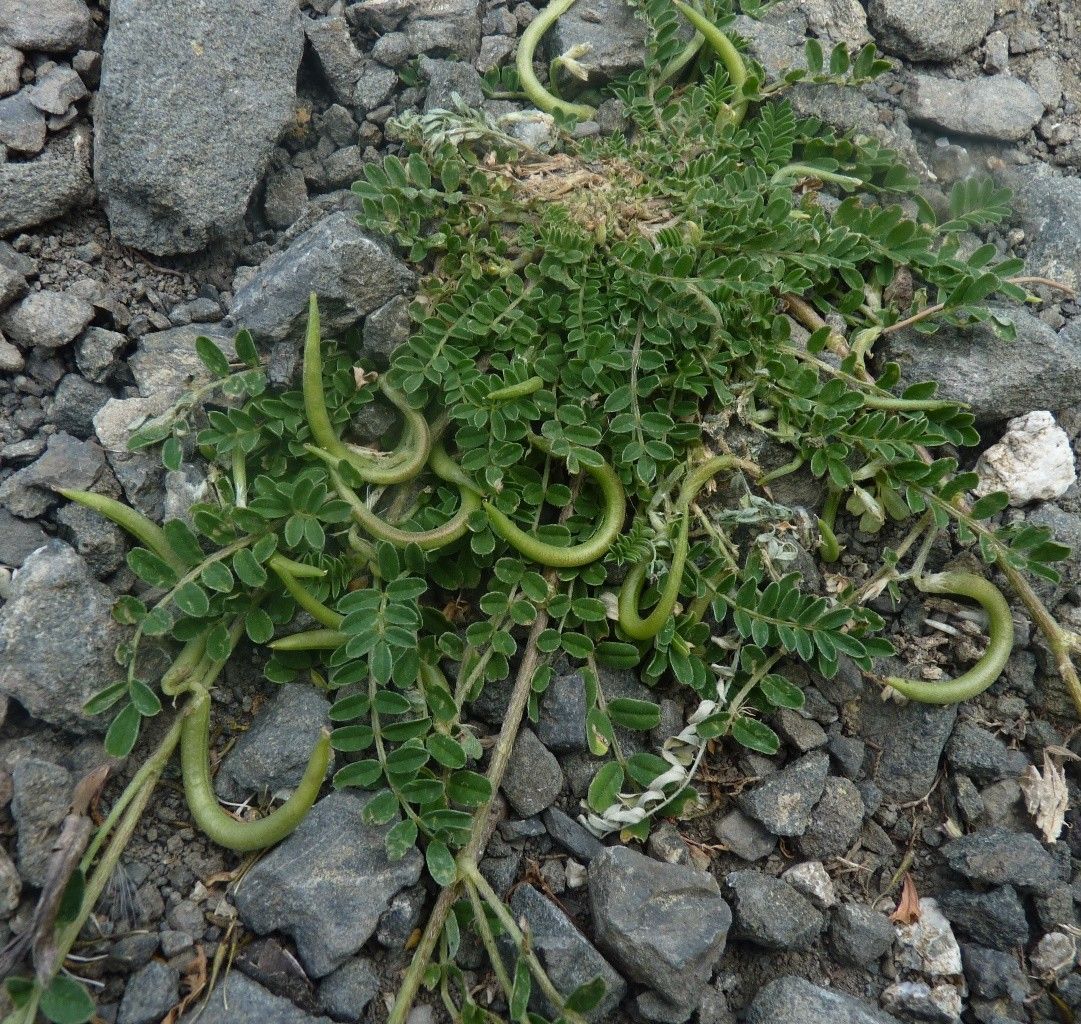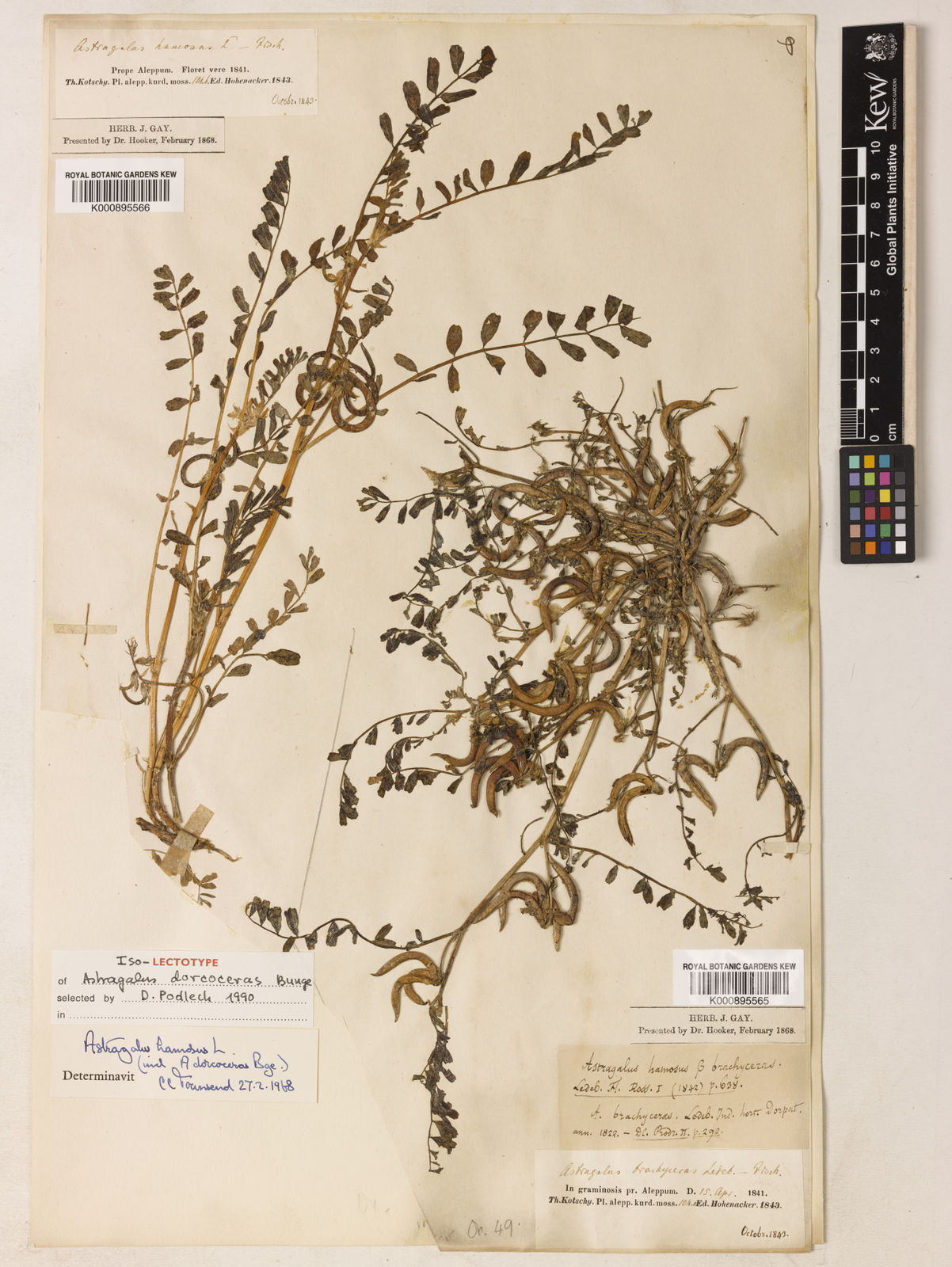Hooked Milk Vetch
astragalus hamosus
Also known as: ["Hooked Milk Vetch","Hooked Milk Vetch Astragalus"]
Overview
A herbaceous perennial plant in the legume family, known for its hooked pods and yellow flowers.
Benefits & Perks
["wildlife attractant (bees, butterflies, birds)","drought tolerant"]
Botanical Classification
| Phylum: | Magnoliophyta |
| Class: | Magnoliopsida |
| Order: | Fabales |
| Family: | Fabaceae |
| Genus: | Astragalus |
| Botanical Name: | Astragalus hamosus |
Plant Characteristics
Basic Information
- Category: Herbs & Weeds
- Suitable Location: border plantings or rock gardens in temperate regions
- Suitable For:
- Is Weed: No
- Allergenicity: low
Environmental Needs
- Climate: {"temperatureRange":"5–35°C"}
- Hardiness: {"zones":"6–9"}
- Misting: rarely required, only if ambient humidity is very low
- Drainage: Fast-draining to prevent waterlogging.
- Soil Type: Well-draining, loamy soil with added organic matter; can tolerate poor soils.
Maintenance Level
- Maintenance Level: moderate
- Toughness Level: moderate
- Pruning Frequency: Annually in late winter or early spring; light pruning can be done as needed.
- Pruning Intensity: Moderate; remove up to one-third of old growth to rejuvenate the plant.
Care Details
Ideal Sunlight Coverage:
Full sun to partial shade (6–8 hours of direct sunlight daily); tolerates some afternoon shade in hot climates.
Sunlight Tolerance Tips:
Acclimate gradually to intense sunlight; protect from harsh midday sun; adjust placement based on seasonal light changes.
Care Requirements
Care Difficulty
moderatemoderate
Sunlight
full sun to partial shade
Rotate plant for even light exposure; use sheer curtains to filter intense sun; monitor for sunburn signs.
Watering
every 7–10 days during growing season, reduce in winter
Water thoroughly but infrequently; ensure soil dries between waterings; avoid overwatering, especially in winter.
Soil
well-drained, sandy loam with moderate organic content
pH: Slightly alkaline to neutral (pH 6.5–7.5).
Use a cactus mix as a base; avoid heavy clay soils; ensure pots have drainage holes.
Temperature
Prefers moderate temperatures (60–75°F or 15–24°C); tolerates cooler conditions but avoids frost.
Protect from frost; avoid placing near drafty windows; maintain consistent temperatures.
Fertilizing
every 4–6 weeks during active growth
Apply fertilizer after watering; flush soil occasionally to prevent salt buildup; reduce frequency in dormant periods.
Propagation
Methods
Stem cuttings or division; stem cuttings are more common for home growers.
Step-by-Step Propagation Guide
- Take a 4–6 inch cutting.
- Remove lower leaves.
- Dip in rooting hormone.
- Plant in medium.
- Keep moist and warm.
Best Time: Spring or early summer when the plant is actively growing.
Environment
Warm (70–75°F or 21–24°C), humid environment with indirect light.
Medium
Well-draining mix of perlite and peat moss or cactus potting mix.
Hormone
Rooting hormone is recommended to improve success rates.
Timeline
Roots typically form in 3–6 weeks; new growth may take an additional month.
Tools Needed
Pruning shears, rooting hormone, small pots, well-draining medium.
Quick Tips
Use healthy, non-flowering stems; maintain consistent moisture; provide bottom heat if possible.
Pruning & Repotting
Pruning Guide
Method
Use clean cuts just above a leaf node or bud; avoid cutting into old wood.
Pruning Plan
Prune to maintain shape, encourage bushier growth, and remove dead or weak stems.
Tools
Pruning shears, sterilizing solution, gloves.
Checklist
Sterilize tools; prune dead or crossing branches; shape the plant; clean up debris.
Repotting Guide
Best Season
Early spring before new growth begins.
Pot Size
Increase pot size by 1–2 inches in diameter; ensure good drainage holes.
Method
Remove plant gently; trim roots if necessary; repot in fresh, well-draining soil with a slightly larger pot.
Suggestions
Repot every 2–3 years or when roots fill the pot; beneficial for growth and soil refresh.
Checklist
Choose appropriate pot; prepare fresh soil mix; handle roots carefully; water after repotting.
Advanced Care Tips
Watering Mastery
Watering Checklist
Check soil moisture; water deeply; ensure drainage; adjust for season.
How to Apply Water Properly
Water directly at the root zone until water drains from the bottom; ensure even moisture without waterlogging; water in the morning to allow foliage to dry.
Watering Schedule Tips
Water deeply once the top inch of soil feels dry; reduce frequency in winter to prevent root rot.
Soil Improvement
Add perlite or sand for drainage; incorporate compost for fertility; ensure good aeration.
Temperature Stress Management
Signs of Temperature Issues
Wilting, yellowing leaves, or stunted growth in extreme heat or cold; leaf drop in sudden temperature shifts.
Cold Stress
Slows growth; may enter dormancy; prolonged cold can damage roots or cause dieback.
Solution: Move to a warmer location; insulate roots with mulch; avoid overwatering in cold conditions.
Hot Stress
Leaf scorch, wilting, or reduced flowering; may drop leaves to conserve water.
Solution: Provide shade during peak heat; increase humidity; water more frequently but avoid waterlogging.
Fertilizing Guide
Fertilizing Checklist
Use diluted fertilizer; fertilize during active growth; avoid winter feeding.
Fertilizing Method
Use a balanced, water-soluble fertilizer diluted to half strength every 4–6 weeks during growing season (spring to early fall); avoid fertilizing in winter.
Common Problems & Solutions
Toxicity Warning
Cats
Non-toxicAstragalus hamosus is not considered toxic to cats. The plant does not contain known toxic substances that would harm felines upon ingestion or contact.
⚡ Toxic If:
Generally non-toxic
Dogs
Non-toxicAstragalus hamosus is not considered toxic to dogs. There are no known toxic compounds in this plant that would pose a risk to canine health if ingested or touched.
⚡ Toxic If:
Generally non-toxic
Humans
Non-toxicAstragalus hamosus is not considered toxic to humans under normal circumstances. It is not known to produce any significant toxic compounds that would cause adverse effects upon ingestion or contact.
⚡ Toxic If:
Generally non-toxic
Frequently Asked Questions
Q: Is Astragalus hamosus toxic to pets?
A: It is mildly toxic to dogs and cats.
Q: Does this plant attract wildlife?
A: Yes, it attracts bees, butterflies, and birds.
Q: How difficult is it to care for?
A: It requires moderate care and maintenance.
Quick Reference
| Family: | Fabaceae |
| Care: | moderate |
| Light: | full sun to partial shade |
| Water: | every 7–10 days during growi |
Get Expert Care Tips
Download the Plantious app for personalized care reminders and plant identification!
Google Play App Store








